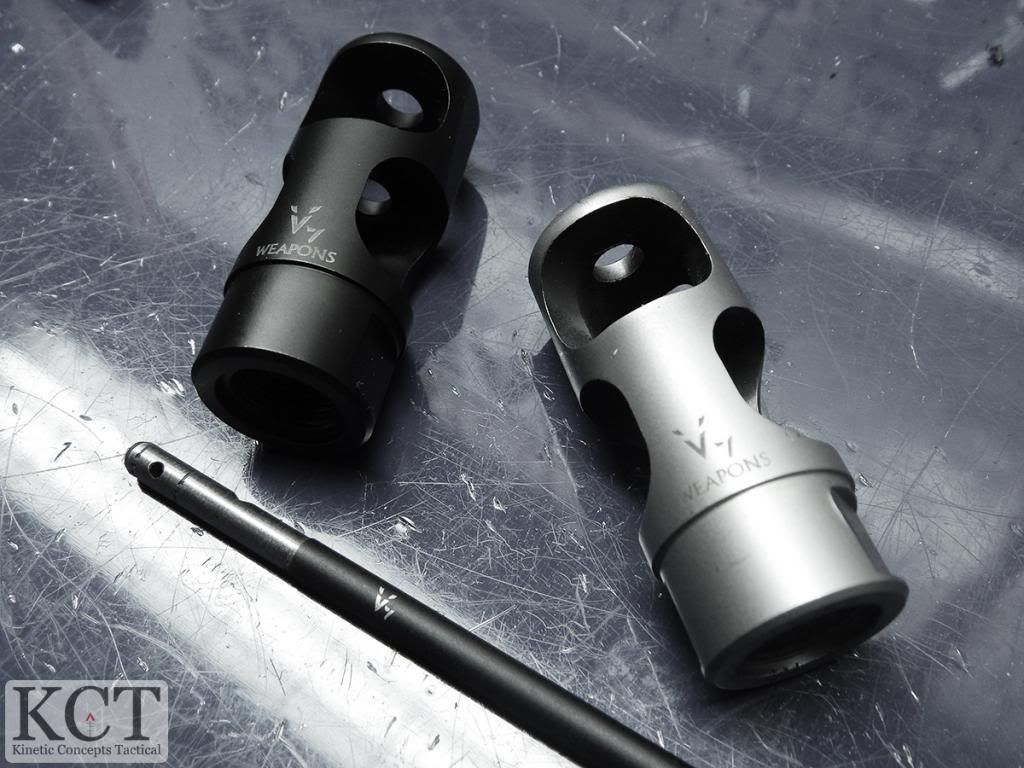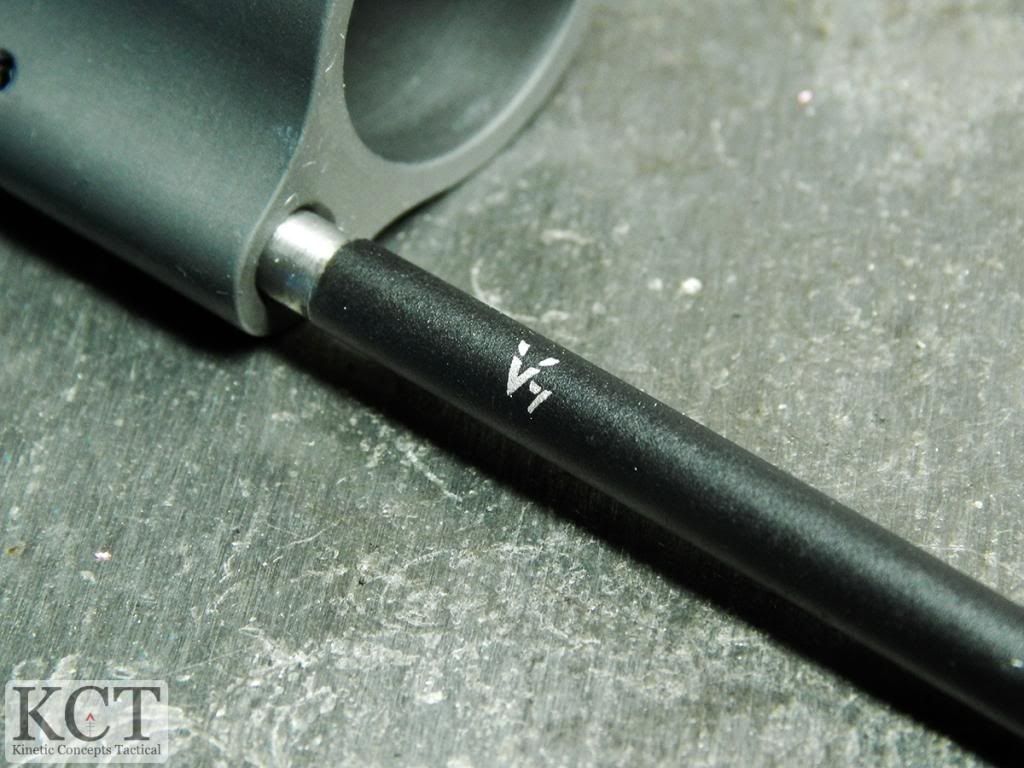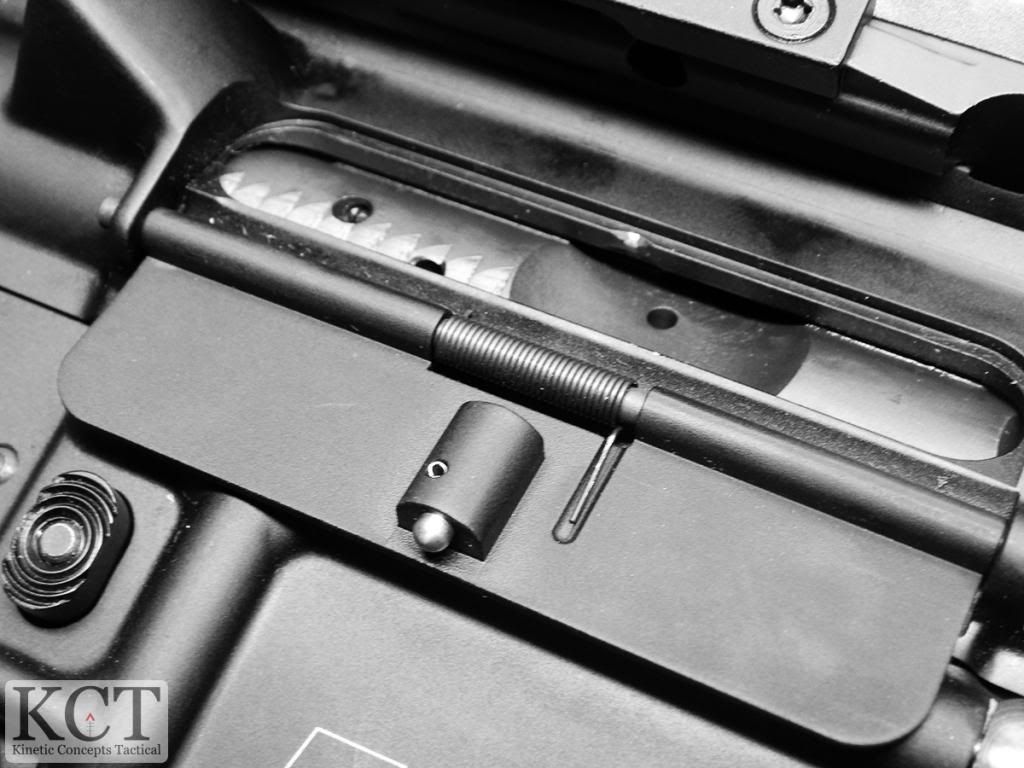The Concept
When it was first developed, the AR-pattern rifle was hailed as a weapon of the Atomic Age. The revolutionary direct-impingement (DI) gas system did away with the bulky piston system present on most self-loading rifles. The polymer furniture lowered the weight to allow the soldier to carry more ammunition, gear, and supplies with less fatigue. The small-caliber high-velocity rounds it fired were unique at the time in a modern fighting rifle.
That being said, for a rifle that has an entire industry behind it, there are some problems that have never been ironed out of the AR design.
One is the gas system. As revolutionary as it was when it was introduced, it does have some issues besides the fouling debate between piston and DI proponents. The real flaw of the DI system is the possibility of the the thin stainless steel gas tube overheating and bursting. This renders the rifle useless, or in the best case turns it into a single shot rifle that has to be charged by working the charging handle every time a fresh round is needed. Not an ideal situation.
Admittedly, this is an extremely rare occurrence. Most rifles will never be run so hot they pop their gas tubes, even in a military setting. However, this problem sets the upper limit for the rifle's rate of fire.
V7 Weapons Systems tackles this problem head on with their new gas tube. They use inconel steel, which is incredibly resistant to heat, and have produced a gas tube that fits the standard mil-spec tolerances.
Why did V7 choose to do this? It's one of the last weak links the weapon has. The use of inconel steel, which is notoriously hard to work with, brings the reliability of the DI system on par with the rest of the platform, which, when done right, is astounding.
If you remember Red Jacket's attempts to come up with a light machine gun version of the AR, you saw the bulky and archaic water cooling system they rigged up to keep the rifles running under sustained full-auto fire. That system was complicated and prone to failure, and was a complicated addition to the weapon to simply bleed the heat from the gas tube.
With the V7 tube, you simply swap gas tubes as normal and you're done. No cooling sleeve, no pumps or coolant, just your rifle. I like reliable rifles, so I really like this idea.
Talking to the crew at V7, they stated they fired so many rounds through their test rifles the receivers were too hot to touch and the charging handle was sizzling. They worked their tubes over with five Beta C-mags on full auto with no issues.
Installation
Our recent install saw this tube being paired with a YHM low-pro gas block, riding under a YHM Specter-length rail set. Installation went without a hitch, the machining on the V7 tube is flawless, and easy to install with the proper tools.
The tube comes with an external protective coating with the V7 logo. The review samples we obtained did not come with a roll pin, so be sure to save yours while changing out the tubes. If you have heard of inconel steel in terms of AR parts, it may be in relation to the Knight's Armament Triple-Tap Brake, which uses inconel steel to allow the brake to weather the heat and blast of the MK18 carbine. That's an impressive pedigree.
If the AR platform was conceived today, it would not be made with the materials a current mil-spec weapon is. There are too many advances in materials in the more than half-century the system has been in use.
Port Door
V7 has introduced a good number of components that essentially exceed the mil-spec standard while reducing weight and increasing corrosion resistance and utility.
Their ejection port door is no exception to the quality and innovation that V7 brings to the table. Their door is advertised as 50% lighter than a mil-spec door. The exterior is also visually striking, as it is perfectly flat compared to the standard part. The smooth surface would be a great compliment to a billet upper or a slick-side upper, but looks great on a standard upper as well.
The V7 door installs just like a normal port door. Removal of the delta ring and barrel nut is often required, and be sure to retain the tiny c-clamp that holds the door retaining rod in place.
If you're using the supplied V7 Enhanced Port Door rod, the rod slides in from the front, and is retained by the delta ring or barrel nut, depending on your chosen handguard. After bending, breaking, and losing more of those tiny c-clips than I can count, I can tell you this is a Good Thing.
Another Good Thing V7 has done is to incorporate a small notch to retain the forward arm of the port door spring. Standard port doors don't have this notch, making it easy for the spring arm to slip loose during installation, forcing you to start over. After installing several of the V7 port doors, I can say I have never had an easier time installing this part. With the fit and function of the part being top notch, it's nice to see V7 streamline the installation process as well.
We were very excited to get this onto our test gun, but we will remove it and give you the results of our weight tests versus the standard port door soon.
Buy once, cry once is an often repeated motto in the firearms world. As a consumer, you can buy a standard parts kit for a reasonable price these days, and get the same materials as the rifle shipped with over fifty years ago, and it will most likely serve you well. What V7 is doing, however, is modernizing the AR platform in all the ways it has been missing since the introduction of Stoner's design. And minimizing the weight of all those critical components that your gun can't do without.
You can see V7's entire line of components here.





No comments:
Post a Comment